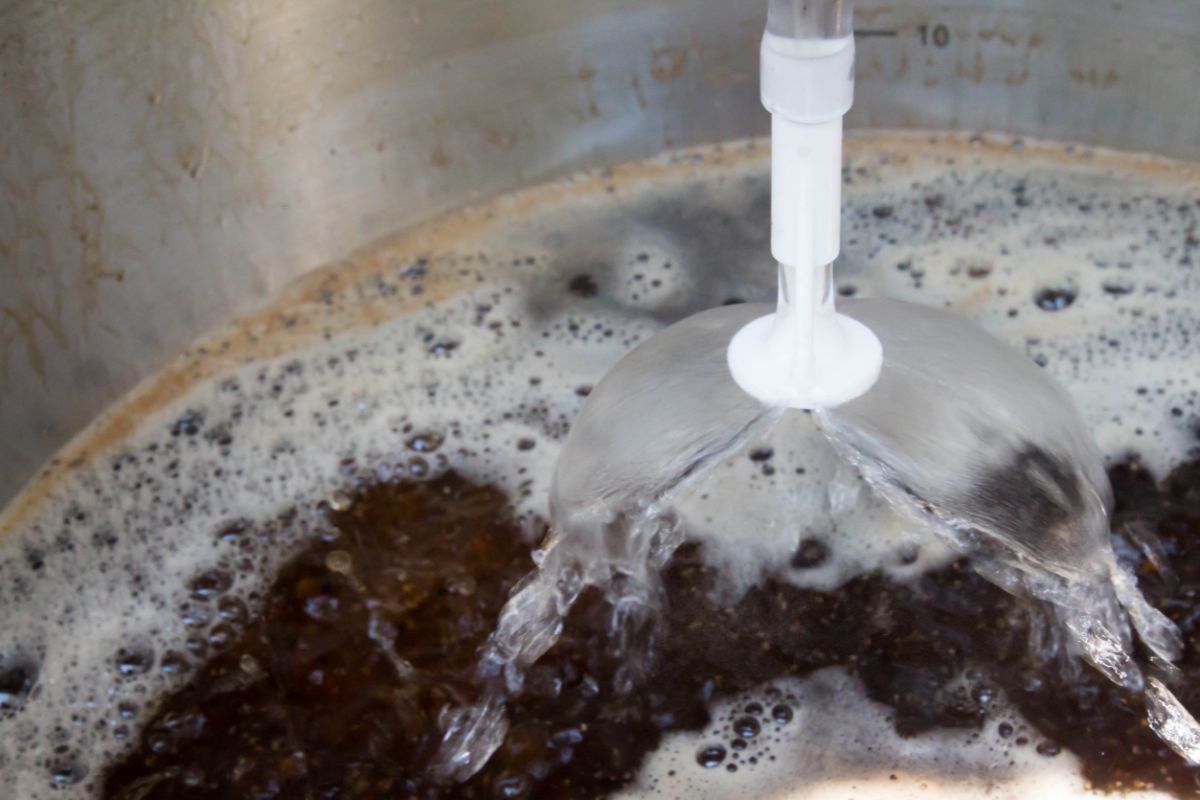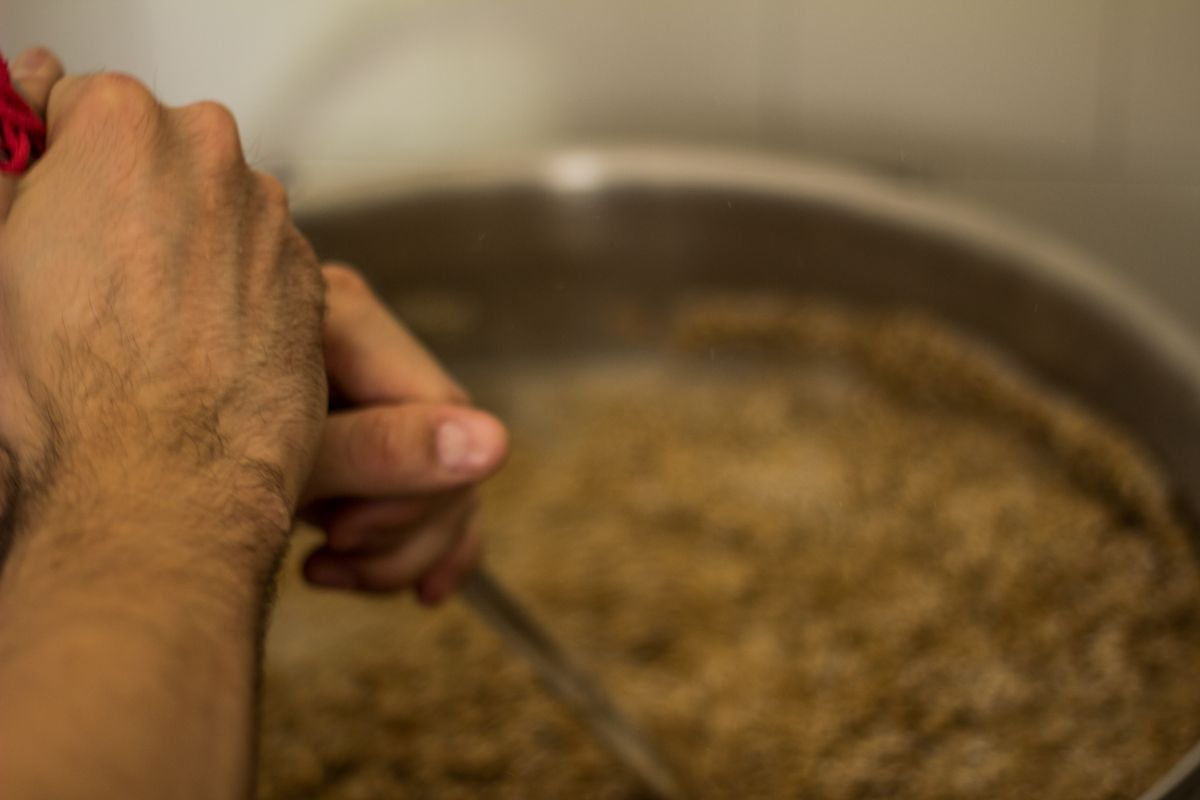If you have engaged in the brewing world, whether as a brewer or a beer aficionado, you may have heard of a unique process known as whirlpooling.
This is a pretty unique brewing method that often occurs after the wort boil. When you boil the wort, which is its own process, you are left with the wort after which the main goal is to separate the trub and hop pellets from the wort.

But the step can be a point of debate among many brewers and homebrewers. Is it actually a step that is worthwhile, and is it something worth doing at home, why do people do it in the first palace?
We are going to explain the process, its benefits, and more in today’s article.
Keep reading to learn more about the whirlpool process, and why it can be important.
What Is The Whirlpool Process?
Wort simply is a term that describes the combination of ground malt (or whatever grain you are using) before fermentation has occurred. In other terms, you can understand wort as unfermented beer.
So before the whirlpool process would occur there is the wort boiling process where hops are added to the wort mixture in order to bring the flavors, bitterness, and aroma of the wort.
This process can greatly affect the outcome of the beer at the end, or in other words its flavor can originate in this process.
Now you have boiled wort, and this is when the whirlpool process occurs. The whirlpool effect is basically just centrifugal force acting on the wort.
The main goal here is to separate the husks of the hop and trub, debris in other words, from the actual wort. We are trying to remove the debris and keep the stuff that has flavor.
In essence the wort is added into a whirlpool vessel at a rapid velocity where the spinning wort is allowed to settle and the debris is kept behind while the wort we want is filtered through by the centrifugal force.
Also bear in mind that ‘whirlpool hops’ are something you might have heard of. THis simply describes hops that are steeped after the boil.
What Are The Benefits Of The Whirlpooling Process?
Well, there is basically one main benefit from whirlpooling, the fact that it removes debris we don’t want. It is common in commercial brewing processes as it requires a larger bit of kit that most homebrewers won’t have.
This said, most homebrewers will see it as a necessary process due to its use in commercial brewing, but this might not be the case.
A homebrewer might try to replicate whirlpooling in a normal kitchen pan which can work but is quite arduous to filter out the debris from the wort without the necessary velocity to create proper centrifugal force.

Are There Downsides To Whirlpooling?
First off, as a homebrewer it can be pretty hard to whirlpool without the proper gear.
The step is relatively easy in a commercial setting with huge tanks that they use specifically for whirlpooling, while a homebrewer will have to imitate this in a pan without other invention.
Secondly, consider that when the hops are added in the wort boil the heat transfer from wort boil to whirlpooling means that the hops can boil for longer than intended and result in some unpleasant bitterness.
Theoretically whirlpooling can increase staling. Staling is a complex process whereby organic chemical changes occur in the beer, and when fermented this can cause flavor and other changes in the beer itself.
This mainly occurs when oxygen is added into hot wort. The oxygen will combine with lipids, melanoidins, tannins, and other potential elements to create undesirable compounds that will cause stalling.
Lastly, something many brewers, both home and commercial, argue about is the existence of something called hot side aeration.
By not whirlpooling you can theoretically eliminate the risk of this, but other brewers would argue this doesn’t affect the brew like we think.
Is There A Better Way To Whirlpool?
When homebrewing the unique small batch size does allow for the use of a better technique to remove the debris in a way that has almost no risk.
Yet, in commercial settings their large batches are better suited to this whirlpooling process.
Homebrewers have a unique opportunity to use something called a ‘hop stopper’ in their brewing kettles. Remember that all whirlpooling is for removing debris, so a hop stopper can basically act like a sieve for such debris.
This allows you to start removing debris immediately after a boil without any mad equipment needed.
In a boil kettle a hop stopper can easily be installed and can screen the hot wort that flows through it.
The wort is then chilled immediately so that the oils and flavors are locked in rather than accidentally ruining flavors with unduly hot temperatures.
Final Thoughts
Put simply, a whirlpooling process is something that occurs when brewing beer.
After the wort is boiled it goes through a whirlpooling process where debris is taken from the wort so that a brewer can harness the most from his hops and what they bring to the beer.
When homebrewing, if the goal is clean wort and maximizing the flavor and aroma, there is a better tool known as a hop stopper which is only really effective in the small batches a homebrewer will be dealing with.
Frequently Asked Questions
Whirpooling is actually no one and one with extracting hop oil.
We want to extract hop oil but this occurs as a function of contact time and temperature, hops don’t have to be in motion from whirlpooling but can simply be steeped to gain hop oil.
Commercial breweries can use tools and methods such as whirlpooling in their larger batches for efficiency. Yet, when home brewing, whirlpooling can actually be detrimental and lead to mistakes.
A hope stopper achieves the same goal that whirlpooling does, but isn;t efficient in commercial settings.
- StockHouseBrewing.com is being acquired by MomentumBrewHouse.com - October 24, 2023
- MomentumBrewHouse.com Acquires EmpiricalBrewery.com - August 31, 2023
- How Many Calories Are In A Bottle Of Beer? - May 24, 2023
